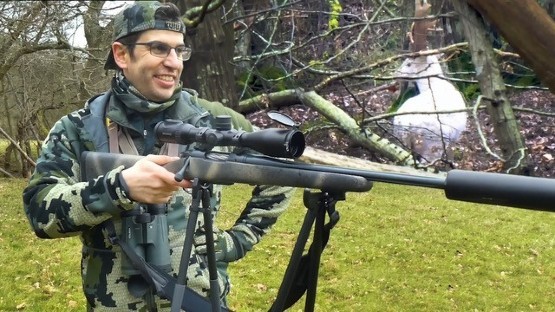We examine why it is possible to see more deer in March than at any other time of year.

As a professional stalking guide, the number one criteria that results in a client having an enjoyable outing is not whether they shoot a deer or not, but how many deer the client sees and how many opportunities they feel they have had during their outing. For this reason, March is one of my favourite months of the year.
The sheer opportunity to see deer in the late winter and early spring is perhaps greater than at any other time. The reasons are numerous. Firstly, the lack of vegetation opens up the woods and improves sight lines. Secondly, the deer are under pressure to find food and with the increasing daylight, it is the fields and hedgerows that first start to bud, something that presents an irresistible temptation to break cover. Add to this, the diminishing cloak of darkness and the behavioural trait that sees Roe congregate in large family groups, and it can feel as though deer can be seen at every turn.
However, with increased opportunity, comes greater responsibility. The deer are winter-weary and the females are heavily pregnant, so exercise restraint and be selective. Ask yourself before setting out in March: Can the ground handle more deer, or would it be beneficial to the environment that there should be fewer? It is important that you do so with a genuine responsibility to the landowner and the environment, because at this time of year, the choices that you make are likely to have a significant impact on population density. Notwithstanding, it is not desirable to be pushing deer that are already at a low ebb.
If you do choose to set out, another point worth reminding you of at this time of year, is that there is an opportunity to change your routine. With deer habituated to concealing themselves from your dawn and dusk forays, and with the irresistible allure of getting some early spring sunshine on their backs, I find that during March, deer will often be found sunning themselves during the middle of the day. I urge you therefore, to do the same, enjoy a bit of welcome sun and mix things up a bit. Get up enjoy your breakfast and then set out, you may be surprised at the results.
If you’d like to get out stalking this March, then why not contact us to make a booking:

Next, onto this month’s film, and it’s a goodie! ‘Hunting the Mythological White Hart’. The Celtic people considered them to be messengers from the 'otherworld' and Arthurian legend claimed that the beast represented mans 'spriritual quest'. We set out on our own quest in rural East Sussex, the county where I first learnt my trade many years ago. To watch the film please follow this link to our short films page: short-films (Hunting the Mythological White Hart Feb' 2020)
 IN Season in England & Wales: Roe Doe, Fallow Doe & Fallow Buck, Sika Stag & Sika Hind, Red Stag & Red Hind, CWD Buck & CWD Doe, Muntjac Buck & Muntjac Doe.
IN Season in England & Wales: Roe Doe, Fallow Doe & Fallow Buck, Sika Stag & Sika Hind, Red Stag & Red Hind, CWD Buck & CWD Doe, Muntjac Buck & Muntjac Doe.
Off Season in England & Wales: Roebuck.
In Season in Scotland: Roe Doe, Fallow Buck
Off Season in Scotland: Red Stag & Red Hind, Sika Stag & Sika Hind, Roebuck and Fallow Doe.
(Editor - Peter Jones)



















